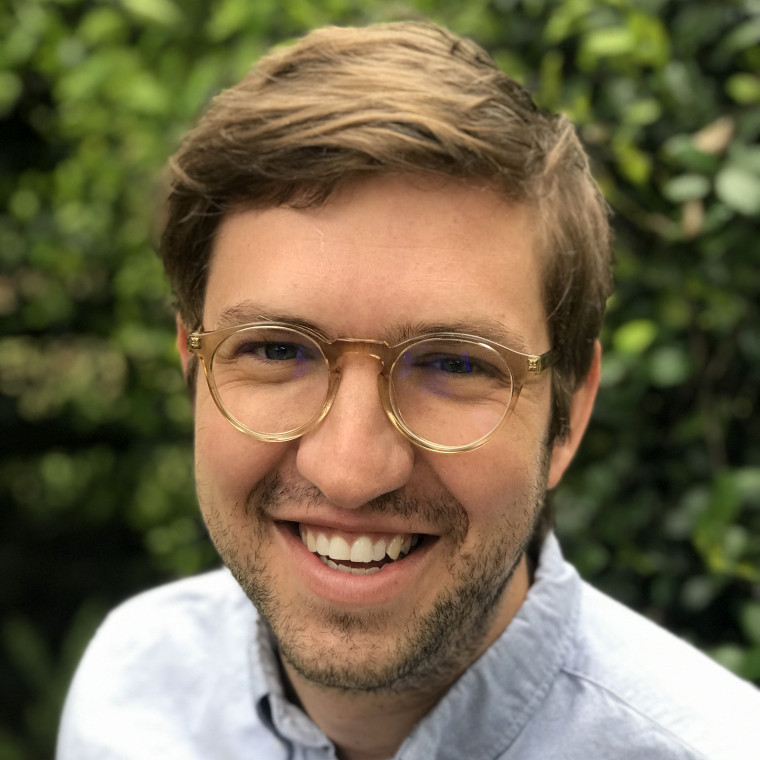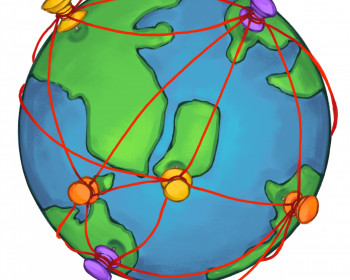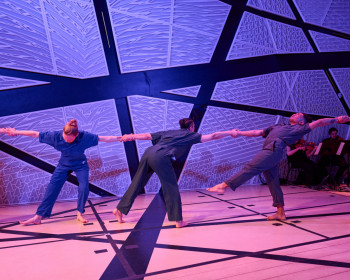Spencer Byrne-Seres

Pronouns
Degree and Class Year
Current City
Major
Extracurriculars
Job Title, Organization
What three words would you use to describe L&C?
Your Time at L&C
What made you want to come to Lewis & Clark?
I was always interested in moving to the Pacific Northwest for college. Having grown up in New Mexico, it kind of felt like the polar opposite in many ways—lush and temperate, and such a different history and feel to it. I also had a lot of friends that wound up in this area at a few different schools, so it felt like I already knew a lot of people here. When I visited the school I was struck by how beautiful the campus was, and loved my experience sitting in on classes. Originally I was interested in international affairs, and I remember hearing L&C had a really strong program (ironically, I never ended up taking an IA class!). I definitely wanted to go to a liberal arts school, and also really wanted some sort of experience of a larger city. Portland was just big enough to not totally overwhelm me. Finally, L&C offered a really generous financial aid package, and that was probably one of the most important factors. I can’t tell you how impactful it was not to come out of school with a mountain of debt.
How did you decide on your major?
I had a pretty classic liberal arts experience and didn’t decide until the last minute to be a studio art major. I think I took a class in almost every department (or at least every building) over the course of my four years. I started as a Russian major, then pondered sociology/anthropology, considered Hispanic studies, but I think secretly, deep down I always knew I would be an art major. It was the only thing that felt both natural and challenging. I could become totally engrossed in projects and had incredible faculty and facilities that supported us to dream big and learn new skills and concepts. L&C has always had a strong art department, and I think that majoring in studio art within a liberal arts school was the perfect fit for me, because I could branch out into so many other departments.
Describe the arts-related highlight(s) of each of your years on campus.
- First year: Becoming the Platteau darkroom coordinator and teaching my peers about photography, learning about the weird world of student clubs, and a transformative Sculpture I class with Professor Mike Rathbun.
- Second year: Starting to work as a gallery sitter in the on-campus Hoffman Gallery and interface with all the art and people that would visit. Learning about artists through the visiting artist lecture series hosted by the art department. Getting involved in [ o u t e r ] space gallery, a pop-up gallery that several of my peers started. Going to the Time-Based Art Festival in Portland.
- Third year: Participating in an alternative spring break trip to Cuba, ahead of the 11th Havana Biennial, where we got to meet with Cuban artists, and collaborate with Cuban art students who I remain close friends with to this day. Learning about all the funding and grant opportunities L&C offers to students for independent projects, and then applying for grants to start an art publication, fund my senior thesis, host events, invite artists to campus, and more!
- Fourth year: Interning and volunteering at arts organizations in Portland. Helping to cocurate the Gender Studies Symposium art show. And obviously creating my senior thesis and working with all my fellow classmates and Linda Tesner in the Hoffman Gallery to put our final show together.
What was your overall favorite arts-related class? Why?
There are probably two: Sculpture II with Professor Mike Rathbun and Curatorial Studies with Linda Tesner. Sculpture II was mostly centered around a single project called How sculpture learns where you pass an object around from student to student and continually add or subtract from or change it in order to create a new sculpture. It was like proto-sculpture memes—a deep dive into the visual language and power of sculpture through rapid iteration, maximum experimentation, and play. I learned so much from this single assignment, and it was exhausting as you had to have a new piece ready for each class for four or five weeks. Linda’s Curatorial Studies class was based around a series of field trips to meet with art professionals from every corner of the art world. It was eye opening to see all the ways in which people participated in making, curating, and caring for art, and it really bridged the work we were doing in class to the real world.
What was your overall favorite non-arts-related class? Why?
The first one that comes to mind was Professor Jim Proctor’s Digital Field Scholarship class. This was a new, upper-level environmental studies class and I was a total outlier—I’m not really sure why Jim let me in! But it’s a perfect example of how you can build interdisciplinary connections within the liberal arts. I was a sculpture student, but interested in maps and the internet for my senior thesis, and low and behold a class about maps and the internet is being taught my senior year! I didn’t know what I was getting myself into, but before I knew it we were beta testing apps on iPads to use in forest ecology studies, reading Donna Haraway, and learning GIS programs. I was exposed to the language and lens of an entirely different field, which strengthened my own work and interests as an artist.
Where did you find community on campus?
I remember there being a lot of ways to connect to various communities through clubs, classes, sports, or just about anything. I got very involved, very early in extracurriculars, which helped me to meet and connect with a lot of people outside of the art building. I really enjoyed facilitating and producing events through my various work-study and student leadership roles, and through this I really got to meet and connect with a lot of people as well.
If you studied overseas while at Lewis & Clark, how did you choose your program?
I almost studied abroad, but decided not to in order to get all of the credits I needed to actually be an art major! This wound up being a blessing in disguise as the spring of my junior year, Sam Ashman BA ’12 and Drew Lenihan BA ’12 organized an alternative spring break service trip to Havana to meet and collaborate with artists working on the upcoming biennial, and film a documentary about them. This led to a return trip, funded by Student Academic Affairs Board (SAAB), to continue the documentary, and I have made many trips and continue to stay connected to friends and peers in Cuba to this day.
Did you have any arts internship or professional development opportunities while you were at Lewis & Clark?
I was able to work in art institutions in Portland, including Disjecta, Portland Institute for Contemporary Art (PICA), and many others. In addition to that, I learned a lot through my work-study positions in the art building, maintaining the woodshop, darkroom, and ceramics studio. I also was able to work as a studio assistant for Associate Professor Ted Vogel and Assistant Professor Garrick Imatani, which were incredible experiences where I got to work on the development and installation of art projects with faculty members.
What were some of your favorite arts experiences in the Portland arts scene?
Obviously the Time-Based Art Festival, hosted by PICA, where I wound up working for almost eight years. It’s an internationally renowned performing and visual arts festival right in Portland that all students should attend! Getting to go to openings at alternative spaces and galleries around town was always fun—Portland has such an amazing ecology of project spaces and temporary galleries that come and go.
Your Time Since L&C
How did Lewis & Clark prepare you for your job?
I think that there are things both large and small that L&C taught me that I carry on into the world. At the top of this list are collaboration, curiosity, and flexibility.
Now that you’ve been out of college for a while, what would you say is the most important thing you learned at Lewis & Clark?
In a big picture way, I was able to see how interconnected our world is, and that we rely on each other to survive. L&C encouraged curiosity in me to see and cultivate new perspectives of the world, to listen, and to observe. I learned that the meaning of whatever we choose to do relies on those that we are in community with, and we are responsible to participate in whatever ways that we can in shaping the world around us.
What are your career goals?
At the moment I work in a large contemporary art museum, helping to design and commission large-scale artworks for artists. My goals right now are to help shape and rethink the ways that institutions show up for artists in making and caring for their work. How do we facilitate spaces for artists to do their societally vital work in a way that is generative and fulfilling for everyone involved? And how do we build a sustainable arts ecology (sustainable being read in all of its potential meanings)? I’m not sure if this connects to a specific career path, but these are the questions that I ask myself everyday and that guide all of the work that I do.
More Admissions Stories
Admissions is located in Frank Manor House on the Undergraduate Campus.
MSC: 32
email admissions@lclark.edu
voice 503-768-7040
fax 503-768-7055
Vice President of Admissions and Financial Aid
Eric Staab
Admissions
Lewis & Clark
615 S. Palatine Hill Road MSC 32
Portland OR 97219

